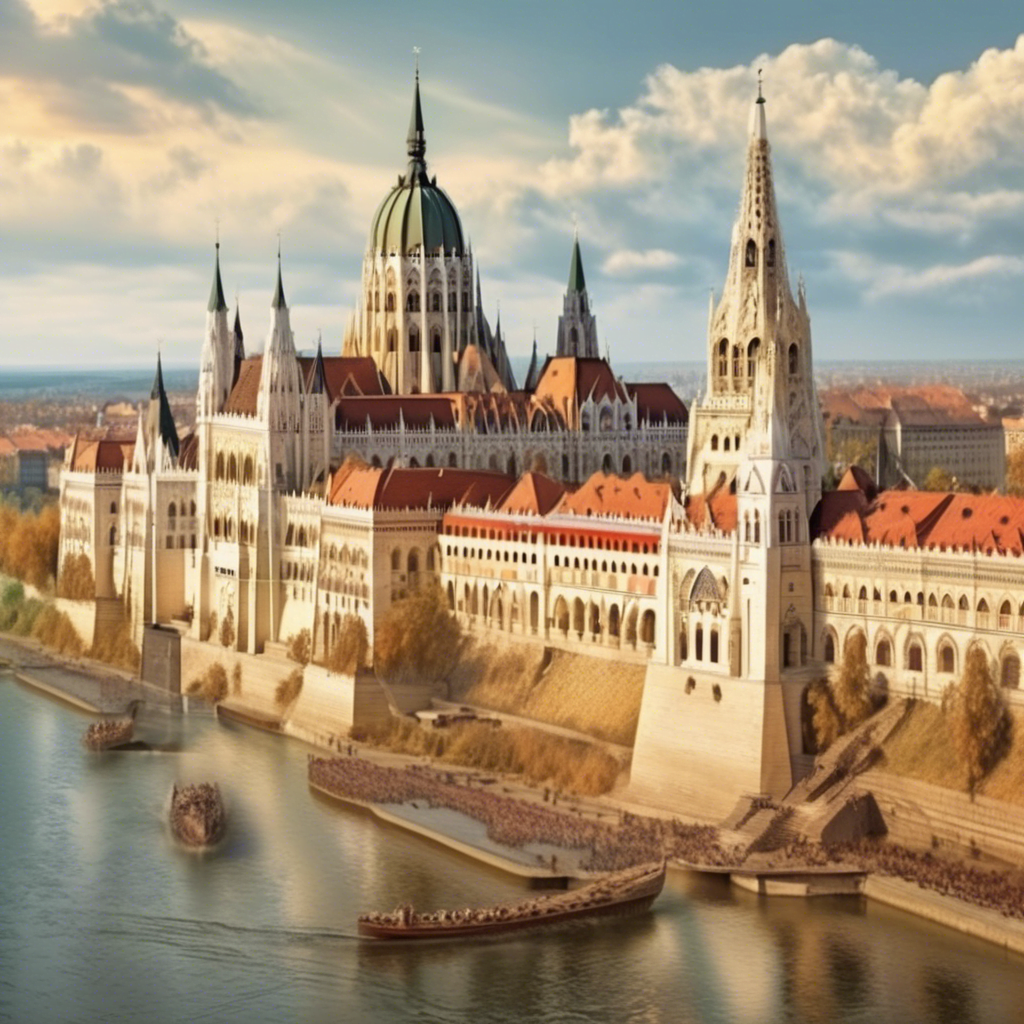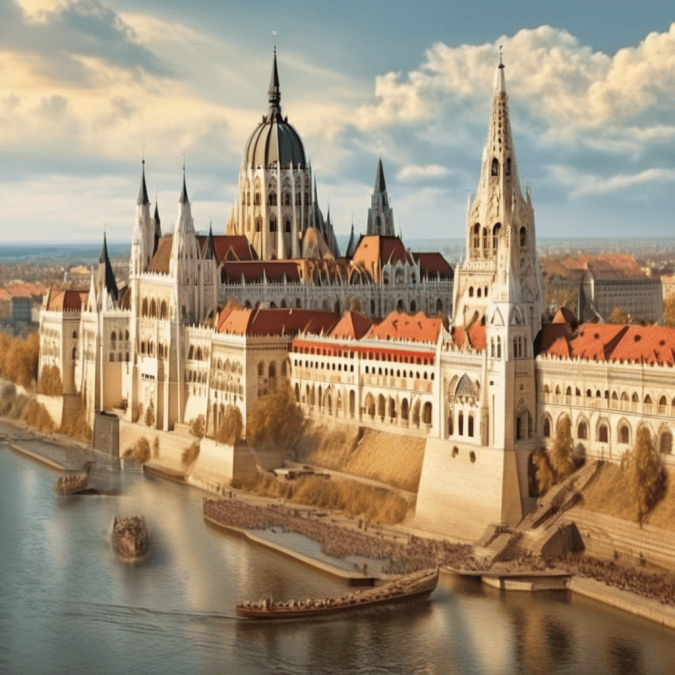
1. Introduction
Overview of Hungary
Hungary, officially known as the Republic of Hungary, is a landlocked country located in Central Europe. It shares borders with Austria, Slovakia, Ukraine, Romania, Serbia, Croatia, and Slovenia. Budapest, the capital and largest city of Hungary, is famous for its stunning architecture and rich cultural heritage.
2. Prehistoric Hungary
Introduction to the Early Inhabitants
The territory of present-day Hungary has been inhabited since ancient times, with evidence of human settlement dating back to the Paleolithic era. The early inhabitants of Hungary, such as the Celts, Romans, and Huns, played a crucial role in shaping the region’s cultural landscape.
Archaeological Findings and Evidence
Archaeological excavations in Hungary have unearthed valuable artifacts and structures that provide insights into the lifestyle, beliefs, and technologies of prehistoric communities. These findings contribute to our understanding of the development of human civilization in the Hungarian territory.
Influence of Neighbouring Cultures
The proximity of Hungary to various neighboring cultures, such as the Romans, Byzantines, and Slavs, has influenced the cultural exchange and development of the region. The interactions with these civilizations have left lasting traces on Hungarian traditions, language, and customs.
3. Kingdom of Hungary (1000-1918)
Foundation of the Kingdom of Hungary
The Kingdom of Hungary was established in the year 1000 with the coronation of King Stephen I, who played a pivotal role in Christianizing the region and consolidating royal authority. The kingdom’s medieval period saw the emergence of powerful rulers and the expansion of Hungarian influence in Central Europe.
Golden Age of Hungary under King Matthias Corvinus
King Matthias Corvinus, also known as Matthias the Just, ruled Hungary during the 15th century and presided over a golden age of cultural flourishing and economic prosperity.
Ottoman Occupation and the Battle of Mohács
The Ottoman Empire’s expansion into Central Europe led to the occupation of parts of Hungary in the 16th century. The Battle of Mohács in 1526 marked a significant defeat for the Hungarian forces and paved the way for Ottoman dominance in the region, ultimately shaping Hungary’s future challenges and struggles.
Habsburg Rule and the Austro-Hungarian Empire
Following the defeat of the Ottomans, Hungary came under Habsburg rule, leading to the establishment of the Austro-Hungarian Empire in 1867. This dual monarchy arrangement brought a period of relative stability and economic growth but also exacerbated tensions between the Hungarian and Austrian constituents.
4. Hungarian Revolution of 1848
Causes and Key Figures
The Hungarian Revolution of 1848 was a watershed moment in Hungarian history, fueled by nationalist aspirations, demands for political reform, and social grievances. Key figures such as Lajos Kossuth and Sándor Petőfi played instrumental roles in mobilizing the populace and advocating for Hungarian independence.
Events Leading to the Revolution
The revolutionary fervor in Hungary was ignited by a series of events, including the spread of liberal ideas, economic hardships, and calls for constitutional reforms. The uprising against Habsburg authority culminated in the declaration of the Hungarian Republic and the adoption of progressive policies.
Outcome and Impact on Hungarian History
Despite initial victories, the Hungarian Revolution of 1848 was ultimately suppressed by the combined forces of the Austrian Empire and Russia. The aftermath of the revolution led to harsh reprisals, curtailment of civil liberties, and a prolonged period of political repression, leaving a lasting impact on Hungarian society and collective memory.
5. World War I and the Treaty of Trianon
Hungary’s Involvement in World War I
Hungary, as part of the Austro-Hungarian Empire, was embroiled in World War I, facing significant military losses and economic hardships. The war’s conclusion brought about the disintegration of the empire and profound changes in Hungary’s geopolitical status.
Consequences of the Treaty of Trianon
The Treaty of Trianon, signed in 1920, imposed severe territorial and demographic losses on Hungary, leading to the dismantling of historic regions and the displacement of populations. The treaty’s provisions had far-reaching consequences for Hungary’s borders, economy, and national identity.
Loss of Territories and Impact on Hungarian Society
The loss of territories and the redrawing of borders as stipulated by the Treaty of Trianon had profound socio-economic and psychological effects on Hungarian society. The disillusionment and resentment among the Hungarian population, fueling nationalist sentiments and contributing to political instability in the interwar period.
6. Interwar Period and World War II
Regency of Miklós Horthy
Following the collapse of the Austro-Hungarian Empire, Hungary entered a period of political turbulence characterized by the regency of Miklós Horthy. Horthy’s authoritarian rule and alignment with fascist powers shaped Hungary’s domestic and foreign policies during the interwar years.
Rise of Fascism and the Arrow Cross Party
The rise of fascist ideologies and the emergence of extremist groups like the Arrow Cross Party in Hungary reflected the broader trend of radicalization in Europe during the 1930s. The Arrow Cross Party’s collaboration with Nazi Germany and its role in the persecution of minorities marked a dark chapter in Hungarian history.
Hungarian Involvement in World War II and the Holocaust
Hungary’s participation in World War II as a member of the Axis powers had devastating consequences, particularly for the Jewish population. The collaborationist government’s implementation of anti-Semitic policies and the deportation of Jews to concentration camps underscored the tragic impact of the Holocaust on Hungarian society.
7. Communist Hungary (1949-1989)
Establishment of the Hungarian People’s Republic
The establishment of the Hungarian People’s Republic in 1949 marked the beginning of communist rule in Hungary under the leadership of the Hungarian Working People’s Party. The imposition of Soviet-style governance and the suppression of dissent ushered in a period of totalitarian control and ideological indoctrination.
1956 Hungarian Revolution and Soviet Intervention
The 1956 Hungarian Revolution, sparked by demands for political reform and greater autonomy, was brutally suppressed by Soviet intervention. The uprising and its violent quashing exposed the limitations of Hungary’s quest for independence within the Soviet bloc and highlighted the harsh realities of communist rule.
Kádár Era and Goulash Communism
The Kádár era, named after Hungarian leader János Kádár, was characterized by a pragmatic approach to governance known as “Goulash Communism.” This period saw limited economic reforms, relative political liberalization, and a focus on consumer welfare to maintain social stability. Goulash Communism represented a unique blend of socialist principles and elements of capitalist consumerism in an attempt to alleviate the hardships of the population.
8. Transition to Democracy (1989-present)
Fall of Communism and Transition to Democracy
The collapse of communism in Hungary in 1989 marked a watershed moment in the country’s history, as the authoritarian regime gave way to a democratic political system. The peaceful transition to democracy was characterized by political reforms, free elections, and the dismantling of communist institutions.
Hungary’s Accession to the European Union
Hungary’s accession to the European Union in 2004 signaled a new chapter in the country’s integration into the European community. Membership in the EU brought economic opportunities, regulatory frameworks, and greater cooperation with other European nations, shaping Hungary’s position within the broader European context.
Challenges and Developments in Contemporary Hungary
In the post-communist era, Hungary has faced various challenges, including political polarization, concerns over democracy and the rule of law, and debates on national identity and sovereignty. Developments such as economic reforms, infrastructure projects, and cultural initiatives have underscored Hungary’s efforts to navigate the complexities of a rapidly changing global landscape.
9. Conclusion
Summary of Key Points
The history of Hungary is a tapestry of triumphs and tribulations, marked by resilience, cultural richness, and a quest for freedom and independence. From ancient settlements to modern-day democracies, Hungary’s journey reflects the enduring spirit of its people and the enduring legacy of its historical legacy.
Reflection on the Significance of Hungary’s History
The history of Hungary serves as a testament to the country’s ability to overcome adversity, adapt to changing circumstances, and forge a unique identity amidst geopolitical challenges. The lessons learned from Hungary’s past continue to inform its present trajectory and shape its future aspirations.
Future Prospects and Areas for Further Research
As Hungary moves forward into the 21st century, exploring new avenues for growth, innovation, and global engagement, there remain opportunities for further research and inquiry into the untold stories, overlooked perspectives, and evolving dynamics of the Hungarian experience.

[…] Investment in Europe: Hungary emerges as a Key […]